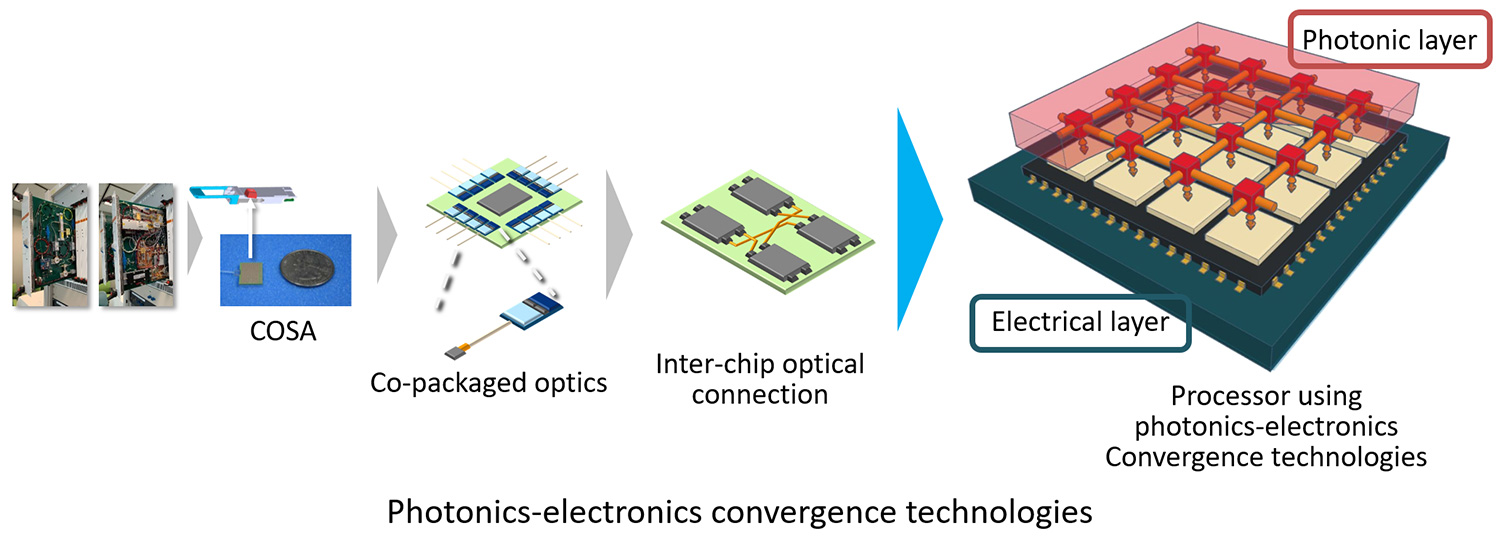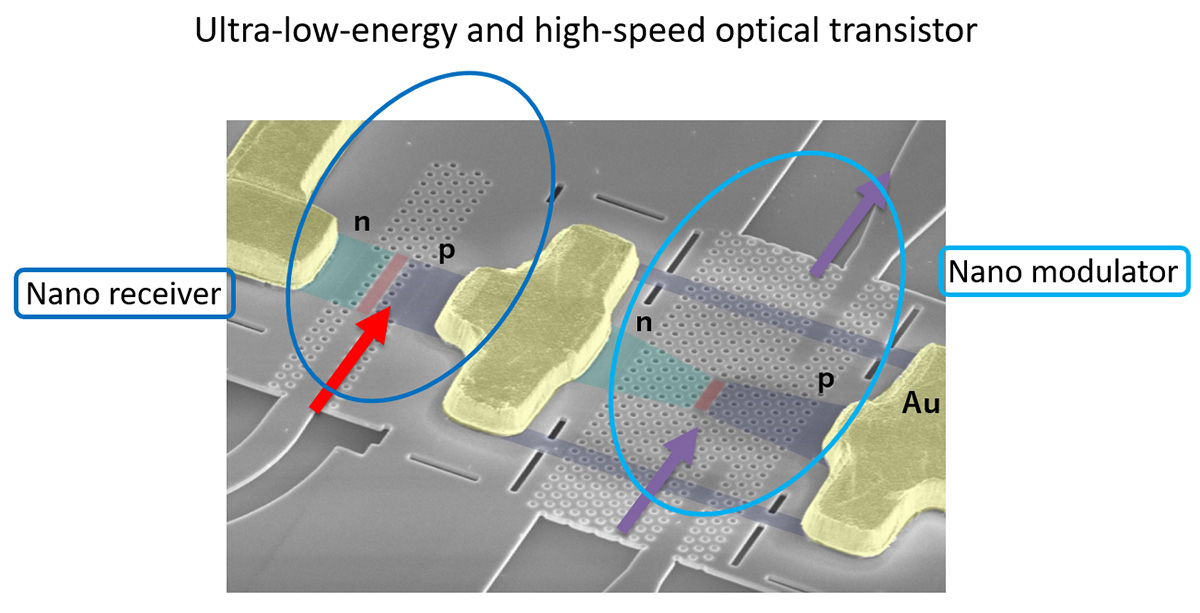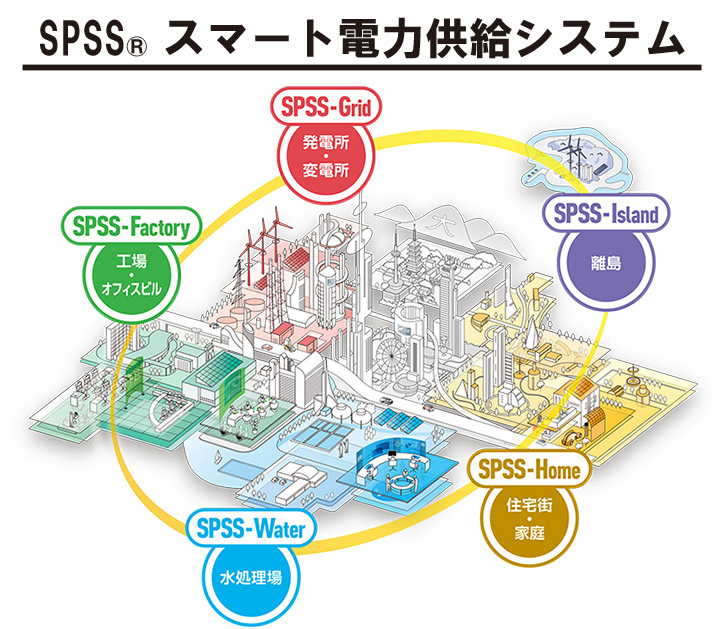To realize the IOWN concept that contributes to the realization of global energy conservation
NIPPON TELEGRAPH AND TELEPHONE CORPORATION
Outline
The use of the Internet of Things, big data, AI, etc. is progressing rapidly, and power consumption tends to increase with the processing of large amounts of data. What’s more, issues regarding the end of the semiconductor evolution are also being raised. To address these issues,
NTT has been researching signal processing using photonics-electronics convergence technologies, which introduces photonics technology into chips, instead of using conventional electronic technology. NTT developed an optical transistor that operates with the lowest energy consumption in the world.
NTT proposed the IOWN concept with All-Photonics Network, which introduces photonics technology from the network to terminals, as one of the key components. We will contribute to the realization of global power savings by drastically reducing the power consumption of network facilities and terminals through the realization of NTT's concept of IOWN.
Description
Aims of IOWN
With NTT’s concept of IOWN (Innovative Optical and Wireless Network), we aim to create an innovative information processing base that will process a greatly expanded volume of information than is currently possible, thereby bring about an innovative means to break out of conventional technical constraints, such as power consumption limitations. We want to convey sufficient information, process it appropriately based on diverse values, and provide benefits naturally. This is missing from the current world of the Internet protocol or the digital world. For this purpose, we are pursuing a transition from digital to natural and, equally important, from electronics to photonics, which is necessary for overcoming technical limitations. Through these two transitions, we aim to provide ultimate safety, security, and reliability, enable sustainable economic growth in an environmentally friendly manner, and achieve local and global optimization that is tolerant of diversity.
Elements of IOWN
NTT’s concept of IOWN consists of three elements: (i) the All-Photonics Network, which introduces photonics technology from the network to terminals; (ii) Digital Twin Computing, which enables future predictions by integrating the real world with the digital world; and (iii)
Cognitive Foundation®, which controls information and communication technology (ICT) resources by connecting everything.
All-Photonics Network
NTT’s concept of IOWN applies optical technology not only to networks but also inside semiconductors in terminals and servers. The intent is to expand the use of photonics technology. The basis for achieving all-photonics technology is photonics-electronics convergence, which makes it possible to process light and electricity on a single chip. This technology is already beginning to be used in network interfaces called coherent optical subassembly (COSA). This photonics-electronics convergence technology will be applied even to information processing parts. Initially, optics will be brought close to chips. This stage may be called “co-packaged optics.” Then, optics will be applied to communication between chips. NTT’s IOWN aims at achieving the fabrication to dramatically reduce power consumption. Optical input/output functions are directly fabricated on CMOS chips to produce a photonics-electronics convergence processor in which optical processing and electrical processing converge.
NTT was the first to develop an optical transistor based on photonics-electronics convergence that can operate at high speed with extremely low power consumption. In April 2019, a paper on this transistor was published in Nature Photonics in the UK. This invention reduces power consumption by about two orders of magnitude in comparison to that of a transistor based on conventional photonics-electronics convergence. The invention of this optical transistor capable of operating with the world’s smallest energy consumption was, in fact, the seed for the birth of the IOWN concept.
NTT aims to increase power efficiency 100 fold* by developing transmission devices that control optical wavelength and photonics-electronics conversation devices.
* Target value for power efficiency of photonics technology portions.
IOWN Global Forum
With NTT, Intel Corporation, and Sony Corporation as initial board members, we have established a new industry forum called IOWN Global Forum for the purpose of cooperating with global partners in driving research and development for IOWN.
Partner(s)
IOWN Global Forum
Supplementary information
IOWN Global Forum
https://iowngf.org/
Other Innovation Challenges
Promote local production and local consumption of electricity and zero emissions, strengthening resilience by constructing a distributed grid through the use of renewable energy and DC power supply technologies
NIPPON TELEGRAPH AND TELEPHONE CORPORATION
Similar Innovation Challenges
Achieving net zero carbon emissions from paint finishing processes
Taikisha Ltd.
Activities for reducing GHG of business operations in Nissin Electric Group
Nissin Electric Co., Ltd.









-1人工光合成技術.jpg?id=2&tid=759&imageNumber=1)